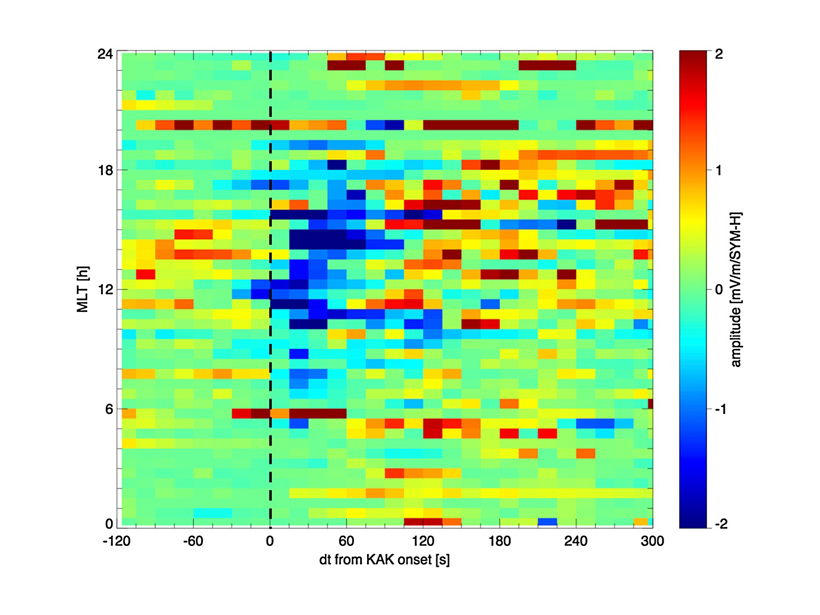Source: Journal of Geophysical Research: Space Physics
A Sudden Commencement of a geomagnetic storm is the result of the impact on the geomagnetic field of an abrupt solar-plasma front impacting the magnetosphere. The characteristics of the Sudden Commencement have been described for a long time. Using a combination of data from many satellites and ground-based instruments, Takahashi et al. [2017] demonstrate for the first time that the relative importance of two wave modes, the fast and shear Alfvén modes, changes as the disturbance moves earthwards. The latter is relatively more important closer to the Earth. This gives new insight into solar wind-magnetosphere-ionosphere interactions.
Citation: Takahashi, N., Y. Kasaba, Y. Nishimura, A. Shinbori, T. Kikuchi, T. Hori, Y. Ebihara, and N. Nishitani [2017], Propagation and evolution of electric fields associated with solar wind pressure pulses based on spacecraft and ground-based observations, Journal of Geophysical Research: Space Physics, 122, 8446–8461, https://doi.org/10.1002/2017JA023990.
—Alan Rodger, Editor, JGR: Space Physics
Text © 2017. The authors. CC BY-NC-ND 3.0
Except where otherwise noted, images are subject to copyright. Any reuse without express permission from the copyright owner is prohibited.

